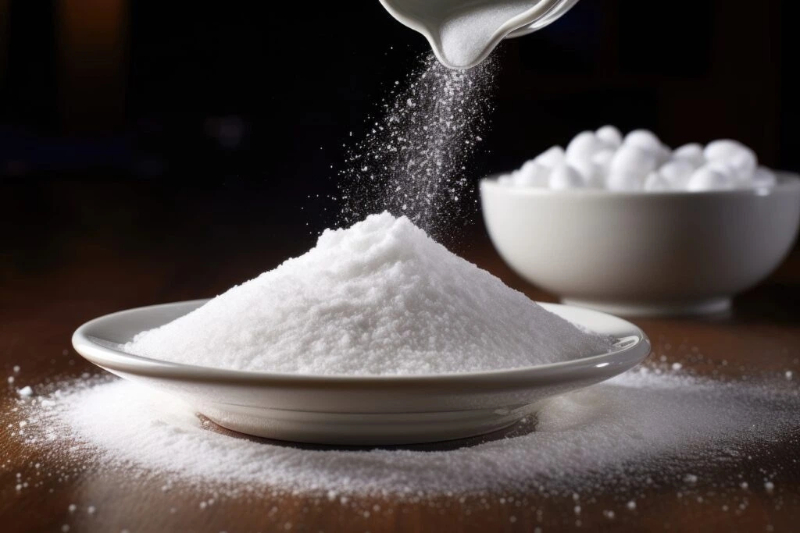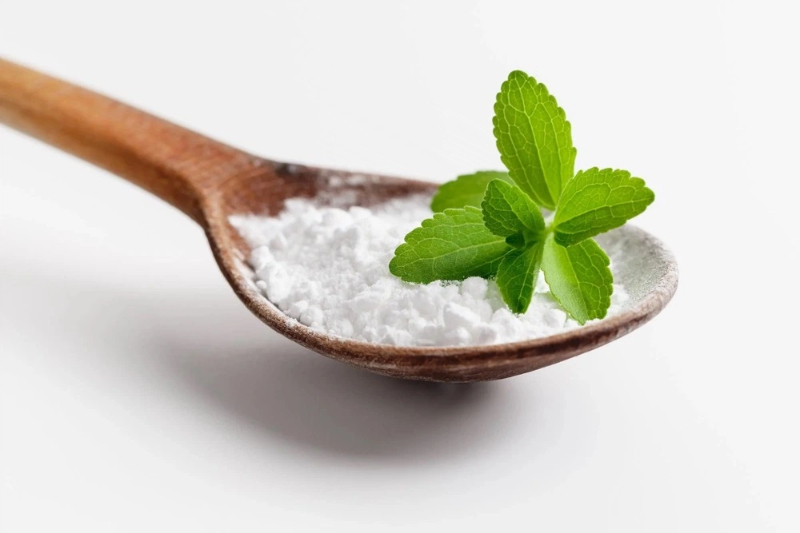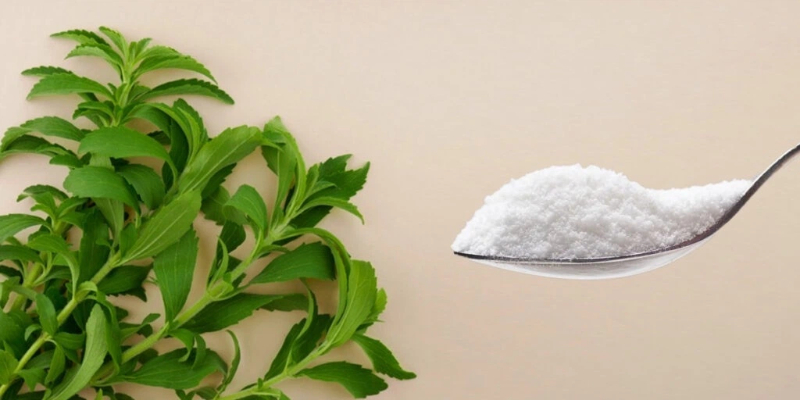Views: 222 Author: Sara Publish Time: 2025-10-18 Origin: Site








Content Menu
● Does Sweet And Low Contain Aspartame?
● How Does Aspartame Work in Sweet And Low?
● Health Aspects of Aspartame in Sweet And Low
>> Safety and Regulatory Status
>> Phenylketonuria (PKU) Warning
● Taste Profile and Culinary Use of Sweet And Low
● Alternatives to Aspartame in Sweeteners
● Common Myths and Facts About Aspartame
>> Myth 1: Aspartame Causes Cancer
>> Myth 2: Aspartame Causes Weight Gain
>> Myth 3: Aspartame Is Unsafe for Children and Pregnant Women
>> Myth 4: Aspartame Breaks Down into Dangerously Toxic Compounds
● How to Use Sweet And Low Safely
● Market Trends for Aspartame Products like Sweet And Low
● Frequently Asked Questions (FAQs)
>> 1. Does Sweet And Low always contain aspartame?
>> 2. Is aspartame safe for everyone?
>> 3. Can I use Sweet And Low if I am diabetic?
>> 4. How much aspartame is in a packet of Sweet And Low?
>> 5. Are there natural sweetener alternatives to Sweet And Low?
Sweet And Low is one of the most well-known artificial sweeteners in the market, widely used as a sugar substitute in beverages, foods, and healthcare products. This article explores what Sweet And Low contains, focusing on the presence of aspartame, its safety, uses, and common questions that consumers and manufacturers often have.

Sweet And Low is a brand name for a sweetening product primarily popular in the United States and around the world. It is marketed as a low-calorie sugar substitute and used widely in coffee, tea, diet sodas, and various low-sugar or sugar-free recipes.
The primary sweetening ingredient in Sweet And Low has historically been aspartame, a low-calorie artificial sweetener that is about 200 times sweeter than sucrose (table sugar).
Aspartame is a synthetic, low-calorie sweetener composed of two amino acids: aspartic acid and phenylalanine. It is approved by food safety authorities globally, including the U.S. Food and Drug Administration (FDA) and the European Food Safety Authority (EFSA), as safe for consumption by the general population.
Aspartame is commonly used in a variety of diet and sugar-free products because it has minimal calories yet provides intense sweetness.
Yes, the classic Sweet And Low product contains aspartame as its primary sweetening agent. The packets usually list aspartame as the active ingredient beneath the product name.
However, it's important to note that there are variations and formulations available on the market. Some products labeled similarly may use alternatives like saccharin or sucralose, but the original Sweet And Low brand is synonymous with aspartame.
Aspartame works by stimulating the sweet receptors on the tongue, providing a sweet taste to the user without the calories associated with traditional sugar.
- It is about 200 times sweeter than sucrose.
- Due to its high sweetness intensity, only tiny amounts are needed.
- It breaks down into natural amino acids and a small amount of methanol after digestion, which is generally recognized as safe in such quantities.
Because of its sweetness potency, minimal quantity is required, which is why Sweet And Low packets contain only a fraction of the volume compared to sugar packets, making it convenient and calorie-conscious.

Aspartame has undergone rigorous scientific evaluation ever since it was introduced in the 1980s. Most authoritative health organizations worldwide consider it safe when consumed within established daily limits.
- The U.S. Food and Drug Administration (FDA) first approved aspartame for use in food and beverages in 1981.
- The European Food Safety Authority (EFSA) completed an exhaustive review in 2013 reaffirming it is safe for the general population at current consumption levels.
- The Joint FAO/WHO Expert Committee on Food Additives (JECFA) set the Acceptable Daily Intake (ADI) of aspartame at 40 mg per kilogram of body weight.
This ADI means a typical adult would have to consume an improbably high amount of Sweet And Low daily to surpass safety thresholds. People achieve sweetness with far less than the maximum allowed.
Individuals with (PKU), a rare inherited metabolic disorder, must avoid products containing aspartame. It contains phenylalanine, which they cannot metabolize properly, potentially leading to harmful buildup in the body.
Because of this, Sweet And Low packaging prominently displays warnings for people with PKU to avoid its consumption.
Sweet And Low is prized for providing a sweetness similar to sugar without impacting blood sugar levels. That makes it a popular choice among diabetics and those pursuing weight management goals.
However, some people note a slight aftertaste that distinguishes aspartame-based sweeteners from natural sugar or other alternatives. Despite this, its delicate sweetness blends well in:
- Hot beverages like coffee and tea
- Cold drinks such as diet soda and flavored water
- Baking and cooking, where it can substitute sugar but may require formulation adjustments because aspartame does not caramelize or brown like sucrose
Manufacturers prefer it for consistent sweetness without the calories or glycemic impact, broadening product possibilities in the food, beverage, and healthcare markets.
Although Sweet And Low is based on aspartame, there are several other popular artificial and natural sweeteners for those seeking different taste profiles or ingredient preferences:
- Saccharin: One of the oldest artificial sweeteners, less sweet than aspartame but widely used in diet products.
- Sucralose: A calorie-free sweetener known for stability under heat, used extensively in baking.
- Stevia: A natural sweetener derived from the leaves of the Stevia plant, gaining popularity for its "natural" appeal.
- Monk fruit extract: Another natural low-calorie sweetener with a slightly fruity undertone, favored for clean labeling.
Consumers often choose based on taste, dietary requirement, and health considerations.
One of the most widespread misconceptions is that aspartame is carcinogenic. However, numerous scientific studies, including large-scale epidemiological research, have found no consistent evidence that aspartame causes cancer in humans.
Regulatory agencies continuously monitor aspartame safety, reaffirming its non-carcinogenic nature.
Aspartame is calorie-free and is often used specifically to reduce calorie intake, thereby supporting weight management. Some claim that artificial sweeteners increase appetite or cravings, but evidence remains inconclusive and individual responses vary.
Health authorities including the FDA and EFSA consider aspartame safe for consumption by children and pregnant women when consumed within recommended limits.
Aspartame metabolizes into components naturally found in many foods, including amino acids and small amounts of methanol. The amount of methanol produced is far less than what is found in common juices like orange juice, making it safe.
- Use Sweet And Low in moderation as part of a balanced diet.
- Always read product labels carefully, especially for phenylalanine warnings if you have PKU.
- If baking or cooking, understand that aspartame lacks the browning and structural properties of sugar, so recipes may require adjustment.
- Combine Sweet And Low with other sweeteners if preferred to balance sweetness and reduce aftertaste.
As sugar consumption concerns rise globally, the demand for low-calorie sweeteners continues to grow. Sweet And Low and aspartame-based sweeteners remain a staple in multiple sectors:
- Food and beverage manufacturing, including beverages, snacks, and desserts
- Healthcare products for diabetic-friendly formulations and therapeutic nutrition
- Weight management and dietary supplements
- Ready-to-use tabletop sweeteners for consumers seeking calorie control
Ongoing innovation targets improving taste profiles and expanding applications, making aspartame a continuing presence in the global sweetener market.
Sweet And Low does contain aspartame as its main sweetening ingredient. Aspartame is a well-studied, widely accepted artificial sweetener that offers a calorie-free alternative to sugar, suitable for everyday use by the general population. Consumers should always check product labels carefully, especially if they have PKU or other health conditions affected by aspartame. The continued innovation in sweeteners ensures options are available for diverse preferences and needs.

Yes, the traditional Sweet And Low product contains aspartame. Some similar sweeteners may use other ingredients, so always check the label.
Aspartame is safe for the general population except individuals with (PKU), who must avoid phenylalanine.
Yes, Sweet And Low can be used as a sugar substitute within a diabetic dietary plan, but consulting with a healthcare provider is recommended.
A single packet typically contains around 35 mg of aspartame, far below the Acceptable Daily Intake for most adults.
Yes, stevia and monk fruit extract are popular natural alternatives with no artificial ingredients.
